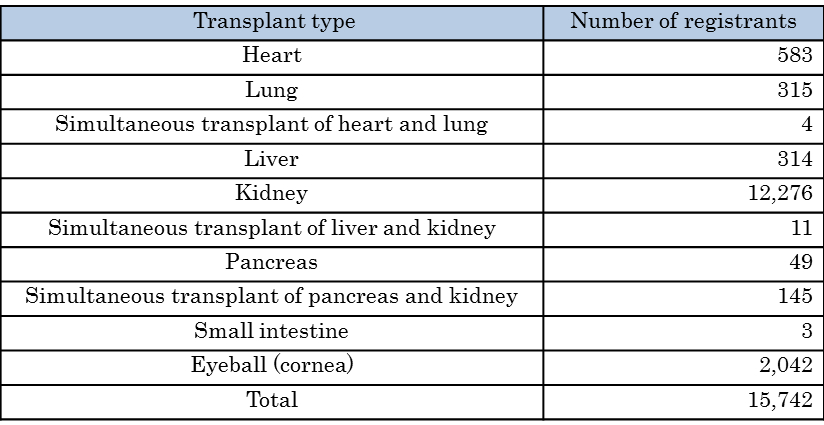Column Finance and the Social Security System 2018.02.23
【Aging, safety net and fiscal crisis in Japan】No.42: Organ Transplantation in Japan
According to The Report on the Implementation of Organ Transplantation released by the Ministry of Health, Labor and Welfare in May 2017, the number of organ transplant recipient registrants was 15,742 as of March 2017. 12,276 of them were for kidney transplants in addition to 2,042 for the eyeball cornea (See Table 1). However, the number of organ transplants performed in the fiscal year 2016 was only 1,727, including 190 kidneys and 1,312 eyeballs. Moreover, when the Organ Transplant Law was enacted in October 2007, the cumulative number for transplants was 34,405 (Table 2). On the contrary, according to the Donate Life America, in 2016 the number of patients having undergone transplants in the United States was 33,600 per year.
As Table 3 shows, the survival rate of Japanese organ transplant patients has been at a satisfactory level. However, the fact that there are few organ donors is becoming a big bottleneck. This is very difficult to solve because of Japanese cultural values on death.

(Source)Ministry of Health, Labor and Welfare


